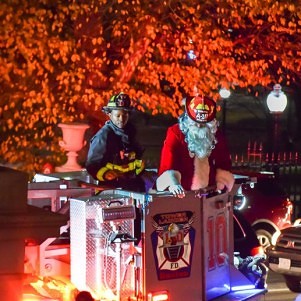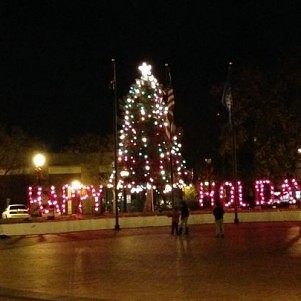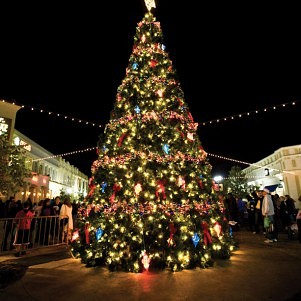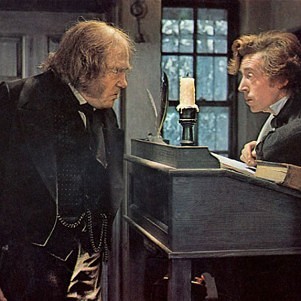Christmas tree growers invest time to produce perfect firs
By Beth Treffeisen | December 15, 2015, 9:37 EST
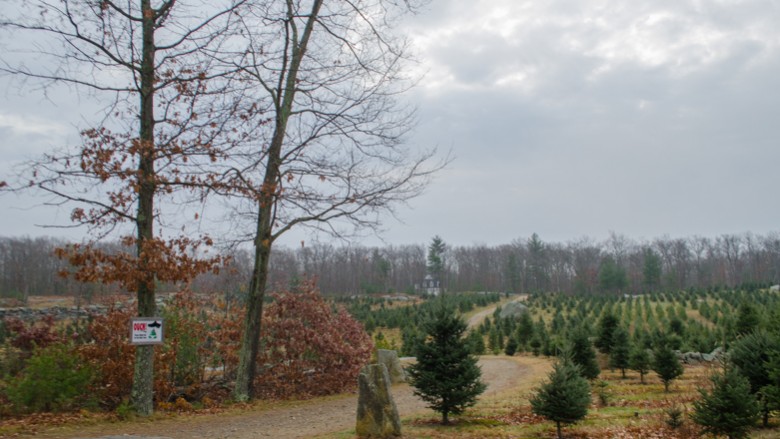 Vandervalk Farm & Winery in Mendon, Mass. on Thursday, Dec. 10, 2015. (Beth Treffeisen, NewBostonPost)
Vandervalk Farm & Winery in Mendon, Mass. on Thursday, Dec. 10, 2015. (Beth Treffeisen, NewBostonPost) MENDON – Up a gravel driveway about an hour from downtown Boston, rows of Christmas trees of all sizes rise from a stone-strewn field that is also riddled with stumps as harvest season comes to a close at Vandervalk Farm & Winery.
“Everybody is looking for the perfect Christmas tree,” said Casey Vandervalk, the owner of the farm. “And every perfect Christmas tree is different for everybody.”
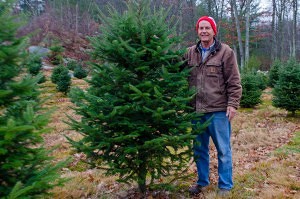
Casey Vandervalk stands next to one of his growing Christmas trees at Vandervalk Farm & Winery (Beth Treffeisen, NewBostonPost)
Approximately 25 million to 30 million Christmas trees are sold in the U.S. each year, according to the National Christmas Tree Association, but few of those are grown locally. Growing the ‘perfect’ Christmas tree isn’t easy, taking an average of seven years and requiring a lot of time and patience particularly in shaping the tree. Many trees require persistent pruning to create the conical form people seek.
“Everything is slow, everything takes time and nothing happens overnight,” said Greg Dowd, the owner of Deerfield Tree Farm in Millis, Massachusetts. Raising trees isn’t like growing a typical crop that gets planted and harvested the same year.
“There’s a lot of planning,” Dowd said.
Typical soil conditions in eastern Massachusetts are not always ideal for the type of evergreens used for Christmas trees, growers say. Firs do best in acidic soil, while one popular variety, Fraser firs, grow better in drier soil while balsams like wetter conditions, said Vandervalk, who grows both types. So he keeps Frasers higher up on the sloping field and the balsams lower down, to catch more water.
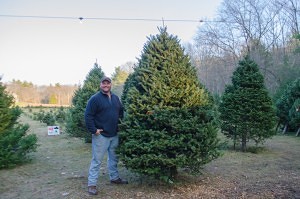
Greg Dowd stands in front one of the pre-cut Christmas trees he plans on selling this year at Deerfield Tree Farm (Beth Treffeisen, NewBostonPost)
“You’re always in the negative when you’re working with the trees,” said Dowd, who typically expects to sell about half of what he plants. The rest of the trees go to making wreaths, mulch, and the remains are chipped to avoid waste.
For cut-your-own tree farms, many must close their fields off early because of high demand. The growers want to save some trees for the following year, and some say consumers can get a little over enthusiastic
“Baby trees with two branches on them – they’re hauling them out,” said Crystal Card, of the Greenwood Tree Farm in Billerica. “So we decided it’s about the excitement of cutting the tree.”
“When they get them back into their living room and they look at it and they go ‘that’s a terrible tree, we’re not going back there again,’” she said, that’s not good for customers or the business. So closing down before things get tot hat point, she added, is a way to ensure better “customer satisfaction.”
At her farm, extra supplies of trees were brought in from Canada to keep up with demand this year.
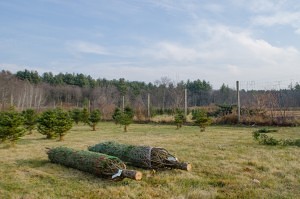
Trees are netted before being brought home at Greenwood Tree Farm (Beth Treffeisen, NewBostonPost)
At the three farms, imported cut trees are placed on stands so they appear to consumers upright and not leaning against other trees in a bin or against a wall. So the trees give the appearance of a live tree, even though they’re not.
“It allows you to spin the tree around and see what it looks like all the way around,” said Glen Card, of the Greenwood farm. His mother, Crystal, added: “It makes it nicer too for the people to come out and see.”
For many people, a major debate arises when it comes to choosing between a Fraser and a balsam fir. Lately, Frasers have become popular because they retain their needles better, so make less of a mess when they’re moved. But balsams are known for their strong evergreen fragrance, a hallmark of the holidays for many.
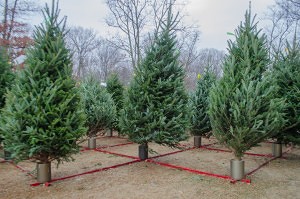
Imported cut trees at Vandervalk Farm & Winery are placed on stands so they appear to consumers upright and not leaning against other trees in a bin or against a wall. (Beth Treffeisen, NewBostonPost)
“Mostly people would rather light a candle with the balsam smell and get the Fraser fir so they don’t have to deal with the needles,” Vandervalk said.
“A Christmas tree that’s $65 – it takes me 9 to 10 years to grow,” and that doesn’t count the years to cultivate from a seedling, he said. “It’s a bargain! You can go buy a dozen of roses and it’s $65 and what does it last, a week? At least the tree lasts a month or even longer.”
Many people don’t like the idea of cutting down a tree to celebrate Christmas, Dowd said. But growers say it’s little different from other types of harvesting, as new trees are planted every year to replace those cut down.
For Dowd, growing trees is a lot like having a family.
“It really is,” he said. “It’s a lot like having kids out there and nothing really happens and you just watch them grow.”

